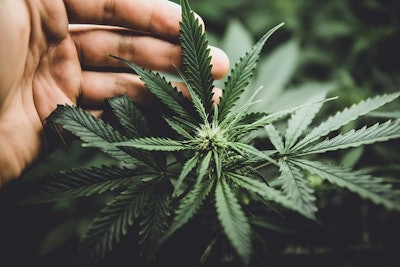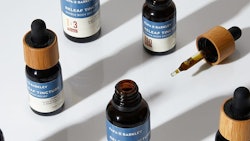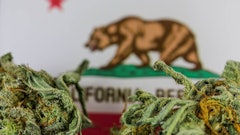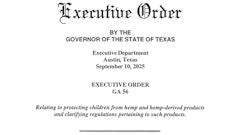
A multiyear study at the University of California – Davis (UC Davis) aims to gather baseline information on nitrogen responses in two types of hemp cultivars to pinpoint optimal nitrogen levels for the crop.
Robert Hutmacher, cooperative extension specialist and center director for the UC Davis Plant Science Department, and Daniel Putnam, agronomist and forage specialist for the department, will lead the research over three planting seasons. The field trial portion of the study will largely take place in 2021 and 2022, and analytical work will continue into 2023.
Hutmacher and Putnam submitted their research proposal to the California Department of Food and Agriculture (CDFA) last year through the department’s Fertilizer Research and Education Program (FREP).
“We really don’t have any data on the nitrogen requirements of hemp, so we said, ‘OK, we’ll do a straightforward, nitrogen requirement type of study with different varieties,’” Putnam told Hemp Grower.
The study will focus on autoflower and full-season hemp varieties grown for CBD production. Autoflower types are photoperiod insensitive, Putnam explained, while full-season types are photoperiod sensitive.
“The photoperiod-insensitive types can be planted at any time of the year, and they will flower within 70 to 90 days,” he said. “They’re shorter. They’re oftentimes heavily branched. … They basically will have about a 70- to 90-day or even 60- to 90-day lifespan compared with what we call the full-season types, which really only flower under short day conditions in the late summer or fall.”
Putnam describes full-season varieties as “very tall and gangly with lots of foliage.” They are largely transplanted and can be planted at a lower density, he said.
Hutmacher and Putnam are cultivating the autoflower and full-season varieties with five different nitrogen rates, ranging from very low to what the researchers thought would be well above what the crop requires, in order to pinpoint hemp’s exact nitrogen requirements. Fertilizer is applied once a week through drip irrigation, which Hutmacher said is a very precise way to water and fertilize high-value crops like hemp.
RELATED: How Does Your Cannabis Fertilizer Recipe Compare?
“One of the advantages of drip irrigation is you can put on small quantities at a time and spoon-feed it to the crop,” he said.
“[Drip irrigation] is a real big plus from an environmental point of view because it’s much more efficient for a crop to have fertilizer delivered directly to the root system with water, rather than just sprinkling fertilizer on the surface of the soil and allowing it to either evaporate into the atmosphere or be washed down into the root zone and escape into aquifers or into rivers and streams,” Putnam added.
The researchers anticipate that nitrogen requirements, like water and other input requirements, will vary based on not only the variety of hemp, but also the growing environment.
“This will at least give us some baseline information on nitrogen responses with these two different types of hemp cultivars,” Hutmacher said.
He and Putnam have conducted studies on hemp’s water requirements in the past using the same approach.
“We have a multiyear history of doing this in conjunction with Oregon State University, looking at water use and rapid transpiration issues in these crops, and then the nitrogen part of it was just the next step,” Hutmacher said.
The researchers have started harvesting this year’s hemp crops, which are different shades of green, depending on how much nitrogen they received during the growing season.
Hutmacher and Putnam suspect that nitrogen inputs affect yield and CBD content, but they are just beginning to gather specific data in these areas.
“We’re in the process of doing the harvest this month and last month on all of these trials, and so really, we don’t have results to look at, at least not from our location yet,” Hutmacher said. “The visual indicators and the color differences all do suggest that there definitely is a nitrogen response. We’ll see whether that’s important in terms of yield responses or the THC and CBD numbers. One of the issues, certainly, in growing any of these crops for CBD or other essential oils is still to see whether you can remain in compliance with the THC limits on the crop. So, if there are any interactions between nitrogen management and THC and CBD, that’s one of the goals of the study is to be able to analyze all of that. We’ll be looking at all of those things as the numbers come in.”
The ultimate goal, Hutmacher added, is to identify the optimal amount of nitrogen needed to grow hemp, and to prevent farmers from using excess nitrogen, which can cause groundwater contamination. The researchers plan to publish the results of the study when they are available.
“We’ve had complaints from a lot of growers … about the environmental impacts of marijuana growing, particularly illegal grows of marijuana, because they put on pesticides and fertilizers that end up contaminating rivers and streams,” Putman said. “And that’s part of the incentive here, to make sure that we have university data that shows what the requirements of the crop might be.”
RELATED: Law Enforcement Seizes $1.2 Billion of Cannabis in Southern California
While UC Davis’ current research focuses on hemp grown for CBD production, Hutmacher said there are farmers in California, particularly in the San Joaquin Valley, who are growing the crop for grain and fiber, and he believes nitrogen requirements for those plants—which can grow up to 12-to14 feet tall—are different than the requirements for CBD varieties, simply due to the larger amount of biomass.
“It was a much longer growing season, much more biomass,” Hutmacher said. “They’re not growing those for essential oils, and it will be a very different type of crop.”
Organic cultivation is another variable, but Putnam said the data gleaned from UC Davis’ research could still be relevant for organic farmers.
“Even though Bob and I are using chemical fertilizers here to supply the nitrogen needs of the crop, those data should be … relevant to those people who are trying to satisfy the needs of the crop through additions of manures or other kinds of organic fertilizers—compost and so forth,” Putnam said. “There might be some advantages to adding some manures or composts because those are typically released a little bit more slowly than, say, surface-supplied granular fertilizer.”
Hutmacher said that the nitrogen research will spark new questions about hemp cultivation and new areas of study in the future.
“That’s what usually happens with these types of things, especially working with a crop that is relatively new to our area,” he said.
“It’s like any other crop,” Putnam added. “It’s got its issues and problems, but on the plus side, I have to say that after working on [hemp research] for about three years, certainly some of the real short-season varieties are going to be very low input."

























